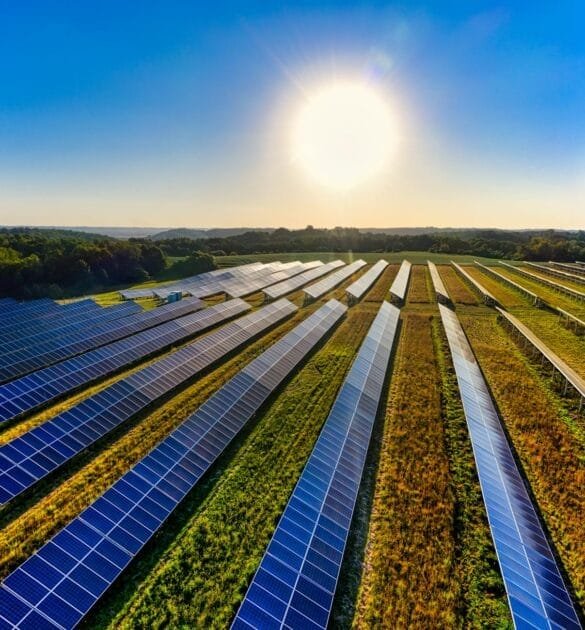India is witnessing a new wave of green revolution, driven by the passion, innovation, and commitment of its youth. Young Indians are taking bold steps toward environmental conservation, leveraging green technology to make the country cleaner, sustainable, and progressive. Let’s explore what green technology is, its key sectors, and how young people are making a significant impact.
What is Green Technology and Why Does It Matter?
Green technology refers to techniques and innovations that help produce energy, manage resources, and promote economic growth without harming the environment. Its primary goals are conserving natural resources, controlling pollution, and tackling the severe challenges posed by climate change.
For example: Smart sensors that monitor air and water quality are excellent examples of green technology. These sensors identify pollution sources and suggest effective solutions to combat environmental hazards.

Key Sectors of Green Technology in India: Examples and Impact
1. Solar Energy
States like Rajasthan and Gujarat lead India’s solar energy production.
Example: Rajasthan’s ‘Bhurjapur Solar Park’ is one of the largest solar power plants in the world, providing clean energy to thousands of households.
Youth Leadership: Startups like ‘Oorjan Cleantech’ have installed solar panels in rural areas, bridging the electricity gap by offering affordable and accessible clean energy solutions.
2. Electric Vehicles (EVs)
To reduce urban pollution and dependence on oil imports, electric vehicles are gaining momentum.
Example: Cities like Delhi and Bengaluru now operate electric buses that significantly lower air pollution.
Youth Entrepreneurs: The founders of ‘Ather Energy’ launched India’s first smart electric scooter, playing a crucial role in promoting eco-friendly transportation.
3. Sustainable Startups
Many young entrepreneurs focus on eco-friendly products and services.
Example: ‘EcoRight’ produces biodegradable plastic alternatives, replacing conventional plastics. Similarly, ‘Susty Party’ designs environmentally friendly party supplies to minimize plastic waste.
4. Artificial Intelligence (AI) and Green Technology
AI plays a critical role in making green technologies smarter and more efficient. It helps optimize energy consumption, monitor pollution, and manage resources efficiently.
Example: AI-driven systems can automatically regulate energy usage in buildings, reducing electricity consumption. In agriculture, AI analyzes soil conditions to optimize water and fertilizer usage.
Youth Contribution: Young AI experts and data scientists are developing AI models for smart grids, waste segregation, and climate pattern predictions, aiding policymakers in crafting effective green strategies.
The Role of Youth: Inspirational Examples
India’s youth are playing vital roles through awareness, innovation, and leadership:
- Aditya Chakravarti: Led a solar energy campaign in his village, bringing affordable and clean electricity to many homes.
- Priya Sharma: Founded a startup that recycles plastic waste into useful products, providing employment to numerous young people.
- Amit Kumar: Established a ‘Green Club’ at his college that organized successful projects on waste management, tree plantation, and energy conservation.

Government Policies and Private Sector Initiatives
The Indian government has launched several key policies and schemes to promote green technology:
- National Solar Mission: Encourages solar energy production by providing subsidies for solar panel installations.
- FAME India Scheme: Incentivizes the adoption of electric vehicles with subsidies and tax benefits.
- Smart Cities Mission: Integrates green technologies for clean energy, waste management, and water conservation in urban planning.
The private sector is also investing heavily in green initiatives. Major corporations like Reliance, Tata, and Adani are committing significant investments in renewable energy and reducing their carbon footprints. Green startups are increasingly receiving venture capital and angel investment support.
Challenges and Future Opportunities
Challenges
- Lack of sufficient charging infrastructure for electric vehicles, especially in smaller towns.
- Limited access to green technologies in rural areas.
- High initial costs of green technology for common consumers.
- AI-based solutions require large datasets and specialized skills.
Opportunities
- Creation of new jobs in green technology sectors such as technicians, researchers, and project managers—including roles related to AI and data science.
- Enhanced energy self-reliance, reducing dependence on oil imports.
- Global leadership in climate change mitigation.
- Inclusive development through expansion of green technologies in rural and semi-urban regions.
India’s youth are propelling green technology forward with their energy, creativity, and commitment. Their efforts not only protect the environment but also pave the way for economic and social progress. Supported by government policies and private sector collaboration, India is advancing towards a cleaner, greener, and more sustainable future.
Every small step taken by young individuals combines to create a significant positive change — this is the true green revolution of India.



